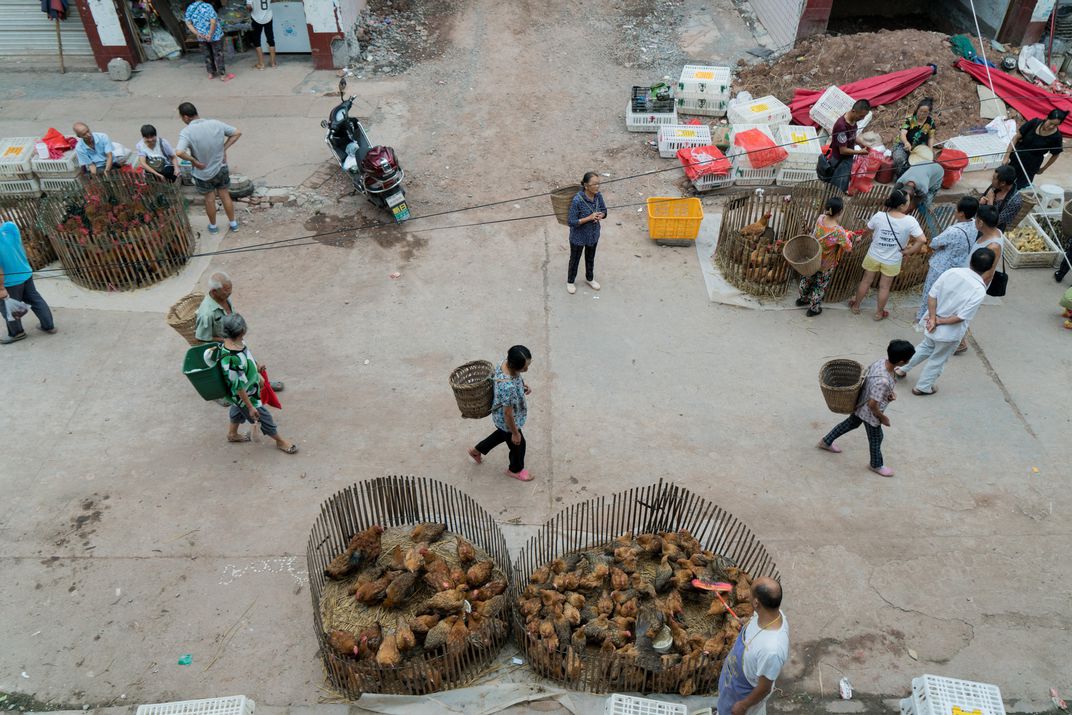According to experts in Asia and the US, the potential for a global pandemic of H7N9, an influenza virus that has jumped across the species barrier from birds to humans, is looming.
It’s origins in China, H7N9 first spread from birds to humans in 2013 and since then, there have been five waves of the virus- the last beginning in October 2016:
1“By September 2017, it had infected 764 people—far more than any of the four preceding waves. Health officials recently confirmed that there have been 1,589 total cases of H7N9, with 616 of them fatal. ‘Anytime you have a virus with a 40 percent mortality rate,’ says Tim Uyeki, the chief medical officer for the influenza division at the U.S. Centers for Disease Control and Prevention, ‘that’s very, very serious.’”
H7N9 is still only acquired through direct exposure to infected animals but should it mutate and develop the ability to pass from person to person, it could spread rapidly and kill millions of people worldwide. Especially in a country of a billion people. And especially in a country full of live-bird markets (there’s a belief that freshly slaughtered poultry is tastier and more healthful than refrigerated or frozen meat); no other place on earth sees so many people in such close contact with so many birds. It doesn’t help that very often those areas are poorly ventilated with multiple species jammed together, thereby “creating an ideal condition for spreading disease through shared water utensils or airborne droplets of blood and other secretions.”
2WARNING: GRAPHIC CONTENT BELOW.
And so, with this in mind, medical researchers are suggesting that H7N9 could rival the 1918 influenza pandemic that killed between 50 million and 100 million people. (My better half wrote a book called “The Great Bird Flu Hoax” about the last pandemic that everyone said was coming and never materialized. What do you think?)
But let’s not forget that “pandemics” aren’t necessarily as devastating as they sound. Anytime anyone dies, it’s a staggering moment and we do not mean to be flippant. But using that word, “pandemic” tends to evoke fear in people and it shouldn’t automatically do that. Remember, the definition of a pandemic is just something that occurs over a wide geographic area and affecting an exceptionally high proportion of the population.
While there are many unknowns, we do know that:
- the Chinese health care system isn’t helping the H7N9 epidemic (coupled with the fact that most rural people tend to avoid Western-style medicine because it’s too expensive); hospitals in China routinely demand payment upfront before they will run any tests or treatment takes place.
- China is often an influenza epicenter.
- Global cooperation is crucial. Along China’s southwestern underbelly lies a string of less developed countries. Any of these could see reoccurring outbreaks given their poverty (especially Myanmar who imports large amounts of Chinese poultry) status.
There is currently no human vaccine available that can guarantee protection against the most recent variant of H7N9. But you can bet that’s not for lack of trying. And no one is giving up on that cash cow yet, either.
The takeaway? If you are going to eat meat, know where it comes from and how it was raised whenever possible and if you can’t know that, buy organic chicken from this country.












